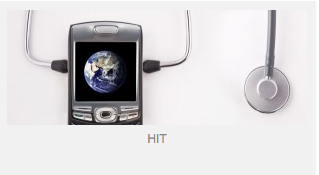Gartner Fellow David Cearley in his paper released in the Gartner ITExpo Symposium held last October, speaks about technologies like Enterprise Application Stores, In-memory computing, Actionable Analytics and ‘Internet of Things’ (IOT), which are set to commence a new era.
Gartner Fellow David Cearley in his paper released in the Gartner ITExpo Symposium held last October, speaks about technologies like Enterprise Application Stores, In-memory computing, Actionable Analytics and ‘Internet of Things’ (IOT), which are set to commence a new era. Actionable Analytics and IOT are closely knit with healthcare technology and the subsequent paragraphs would seek to explain the degree of closeness and the scope of change expected in the coming year.
Actionable Analytics
Customer-oriented and data driven methods today occupy the center stage for managing healthcare processes. “Healthcare analytics is an application of statistical, qualitative and predictive analysis to data that address regulatory and quality issues facing health care,” wrote Trevor Strome, e-Informatics Lead for the Winnipeg Regional Health Authority. “Analytical tools now aid Healthcare organizations in meeting the operational needs of users at the point of action and in context,” says David Cearley in his paper.
More and more health care organizations (HCOs) are seen moving towards the use of healthcare analytics to improve their efficiency, clinical quality and patient safety. It is still an emerging phenomenon. Rapid increase in the adoption of electronic medical records (EMR) and other computerized clinical systems are instrumental to the increased use of analytical tools. According to Trevor, achievement of quality and performance goals in healthcare improvement comes from actionable information derived from the strength of analytics which can thin-slice the information needed to tackle quality and performance issues. It requires application of analytic and business intelligence tools in a strategic combination with initiatives targeted towards quality improvement. Quoting Trevor “Integration of these tools into healthcare quality improvement initiatives would provide more value and offer more opportunities for true transformation. With the improvement of performance and costs, IT leaders can afford to perform analytics and simulation”.
The Internet of Things
Cearley explains how Internet of Things (IOT) will expand connecting consumer devices and physical assets to the internet. Key elements of the IOT include embedded sensors, image recognition solutions harping upon advanced healthcare technology . Smartphones and other intelligent devices communicate through a wide range of devices and peripherals, such as healthcare sensors, smart posters, and home entertainment systems.

In many healthcare organizations, especially those with many devices, there will be a single operator who will oversee all Internet-connected entities. Gartner sees IOT as source for a wide range of new applications and services in health information technology with many new challenges.
According to Cearley, it is going to be a nexus of converging forces like mobile, social, cloud and information that would be revolutionizing both business and health IT creating new leaders in the coming years.
So what would be the basis of technology platform of the future? Certainly it is the “nexus of Forces” says Cearley. The technology of creating and managing patient health records including its transmission and storage is rapidly advancing. Experts seem to be convinced that federal government and the private sector have already recognized the potential of this technology. Gartner’s prediction for 2013 and beyond is an endorsement to that view.
Image Courtesy :www.faxsolutionsblog.opentext.com and www.examiner.com